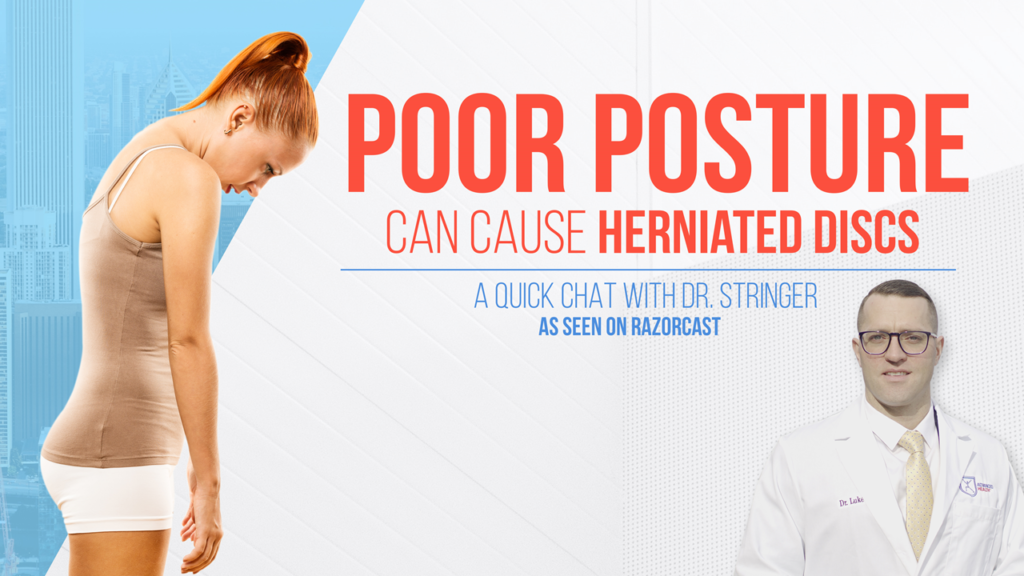Posture is the window to your health. We practice downtown in the South Loop in Chicago, and we are speaking to the local community on the importance of good posture. Spine alignment optimizes function within the nervous system and gets our discs to function optimally.
A spinal disc is between two vertebrae within the spine and its job is to act like a shock absorber between the vertebrae. A really important job of a disc is to separate the bones enough so there is a lot of room for the nerves to come out of the nerve canal. Healthy discs that are full of fluid, nice and spongy, and nice and malleable, allow the spine to move, flex and rotate, and absorb a lot of force.
Repetitive stress over time creates stress and strain within the disc. For example, you’ve got really poor neck posture. Your head is out in front of your chest, you’ve lost your neck curve, you’re putting too much pressure to the front of the disc. Repetitively over time, that stress and strain and tension is going to break that joint down and break the disc down, which can cause disc pathology, bulges, and herniations.
The first thing that happens when a disc is under pressure from poor posture, for example, is that you start to lose this space between the vertebrae from poor alignment, and that creates a disc bulge. That’s where the disc fluid starts to bulge into the nerve canal.
And then when a disc herniates, essentially what it means is the collagenous tissue on the outside of the disc essentially starts to crack and break. So instead of keeping the fluid in the central part of the disc where it should be, that fluid starts to shift out away from the central part of the disc, and it can shift into the nerve canal. There are different severities of herniation, which are based on the amount of damage within the collagenous tissue, and how much fluid is coming out of the disc. For example, a bulge and a herniation are on the lower end versus a dissection and/or prolapse, which is when a disc is completely damaged and more often than not needs surgery.
We should have a 40-degree curve in our lower back. Because we’ve been sitting at a desk for 10 years, 40 hours a week, that curve is now at 20-degrees. We lost 50% of the curve within our lower back, which is quite common to see within the corporate athlete. The curve is designed to absorb force at the back of the joint. Now, because we have less of the curve, the weight, instead of being absorbed in the back of the joint where all the extra bone is, it’s now going to migrate to the middle of the front of the joint. So then when we’re seated in a flex position leaning forwards, the weight is now not all being absorbed in the back of the joint where it should be, it’s being absorbed in the front.
Obviously, as we repetitively do this over time, if the front of the joint in our lower back is now absorbing more force than the back, this is going to increase pressure in the disc. By being seated and sitting in a flexed position, leaning forwards, that is poor posture. And research is pretty clear, you can increase pressure within the joint by 300%. So, by repetitively doing this day to day, that can absolutely lead to issues in the disc, including herniations and degeneration in the spine.

